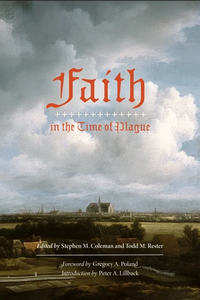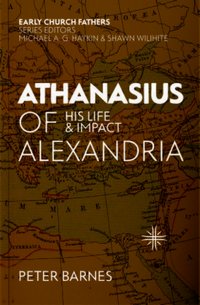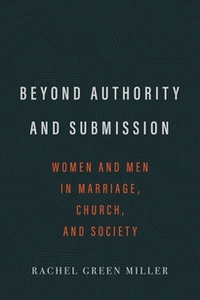 Church History in Plain Language, Fifth Edition
Church History in Plain Language, Fifth Edition
by Bruce L. Shelley, Revision Editor: Marshall Shelley
DETAILS: Publisher: Zondervan Academic Publication Date: July 13, 2021 Format: E-book Length: 624 pg. Read Date: March 27-May 23, 2023

What’s Church History in Plain Language About?
From the Publisher’s website:
Bruce Shelley’s classic history of the church brings the story of global Christianity into the twenty-first century. Like a skilled screenwriter, Shelley begins each chapter with three elements: characters, setting, plot. Taking readers from the early centuries of the church up through the modern era he tells his readers a story of actual people, in a particular situation, taking action or being acted upon, provides a window into the circumstances and historical context, and from there develops the story of a major period or theme of Christian history. Covering recent events, this book also:
- Details the rapid growth of evangelical and Pentecostal Christianity in the southern hemisphere
- Addresses the decline in traditional mainline denominations
- Examines the influence of technology on the spread of the gospel
- Discusses how Christianity intersects with other religions in countries all over the world
For this fifth edition, Marshall Shelley brought together a team of historians, historical theologians, and editors to revise and update this father’s classic text. The new edition adds important stories of the development of Christianity in Asia, India, and Africa, both in the early church as well as in the twentieth and twenty-first centuries. It also highlights the stories of women and non-Europeans who significantly influenced the development of Christianity but whose contributions are often overlooked in previous overviews of church history.
This concise book provides an easy-to-read guide to church history with intellectual substance. The new edition of Church History in Plain Language promises to set a new standard for readable church history.
Bad History
This book is just filled with errors—or questionable statements. The one that threw me for a loop was the description of the Council of Nicea, when the text cites the Nicene Creed (325) saying that this is the one that was agreed upon there. But what is cited is the Niceno-Constantinopolitan Creed (from 381) with the Filioque clause (from 1014). Humbug.
The section on Calvin was a mess. In a discussion, I summed up the section on English Puritans as, “Tell me you’ve never read the Puritans without saying you’ve never read the Puritans.” It’s one thing for Max Weber or H.L. Mencken to mischaracterize them, it’s something else for fellow believers to do it.
And the Crusades? They’re given a tiny amount of space (I’ll be generous and say 6 pages…1 percent of the total work), and the explanation of them is half-hearted at best. Given that people of several faiths (and those without faith) still use the Crusades to evaluate Christianity and the way it interacts with the rest of the world, the reader is not well served that they’re given short shrift.
And I’m no historian—I’m a hobbyist at best when it comes to a couple of time periods in Church History. If I can find problems like that—off of one reading—how many more are there? (this is not an exhaustive list of the problems I noted, just some of the more glaring ones—and ones that I’m more confident in).
The Problem of Perspective
The perspective of this book comes from all over the place. Whatever Shelley did in revising this, he didn’t edit it enough so that the perspective is unified. That’d be okay if each chapter/part of a chapter was identified by a particular contributor. Chapter X is by Y, from such-and-such School/Background. Chapter A is by B, from this other Church. Then you could understand where divergent voices are coming from and understand some of the prejudices (as much or as little as they’re tried to be eliminated).
But here, it’s presented as one voice—when it clearly isn’t—and the perspective isn’t identified. So we get this section with a heavy Anabaptist sympathy, another section with some latent Modalism, some Dispensationalism, and so on.
I just kept getting whiplash as I’d read, where was this coming from?
So, what did I think about Church History in Plain Language?
For a few weeks, I’d been leaning toward giving this 2 Stars (but hoping something would make me change my mind so I could give it at least 3). At least the scope of this work should cause me to give it the benefit of the doubt.
But…I just can’t do that. If you can’t get something so basic as the history and content of the Nicene Creed right, it’s a problem. This is a history book, you should, you know…get the history right. I’ve got other examples—but this is sufficient. If you can’t get the big things like this right, why should I trust you in the lesser?
A bigger problem is being as casual about Christology as this is. If you’re going to be writing a book of Church History, you should get the essentials right. Again, I have other examples—but why? And again, if you’re not trustworthy here, why should I trust you elsewhere?
Now, I’ve been intending on reading this book since I was in college—it was probably the Second Edition that my roommate had on his shelf (but who knows, maybe it was the first). But I hadn’t gotten around to it. I really wish I had read it then, so I’d know how much of the weaknesses of this edition were characteristic of Bruce L. Shelley and how much comes from his son and his collaborators in this mess.
It’s a history book—at most, it should interest and educate a reader—it should not make the reader upset, much less angry. And I got angry multiple times.
At the end of the day, this was a waste of 600+ pages and a whole lot of my time. Avoid this.

This post contains an affiliate link. If you purchase from it, I will get a small commission at no additional cost to you. As always, the opinions expressed are my own.
![]()







 The Apostles’ Creed
The Apostles’ Creed














